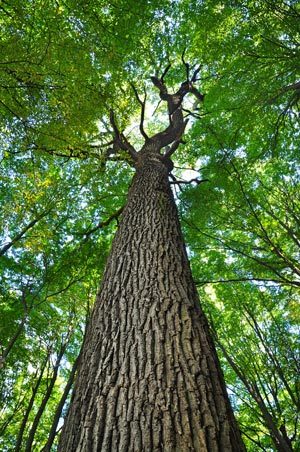Parquet flooring: wood types in general
 Many types of wood are suitable for processing into wooden flooring, especially parquet flooring. A wide variety of colors, surface textures and wood density create a quality of living that is unique to wood. The high thermal insulation ensures lower heating costs.
Many types of wood are suitable for processing into wooden flooring, especially parquet flooring. A wide variety of colors, surface textures and wood density create a quality of living that is unique to wood. The high thermal insulation ensures lower heating costs.
The versatility of this renewable raw material has proven itself over centuries and enjoys a topicality that can hardly be surpassed. The parquet flooring manufacturers and likewise their distributors offer an extensive production, which can be combined and designed in many ways.
Important for the parquet production is the density of the wood, the compressive strength as well as the hardness and the swelling and shrinking behavior in case of humidity changes.
Since about half of the wood substance consists of carbon, forests are the largest carbon sinks in the biosphere after the oceans and are therefore significant for the CO2 balance of the atmosphere.Processed wood obtained from sustainable forestry thus reduces the CO2 content in the air. During photosynthesis, which takes place in the leaves of the tree, carbon dioxide present in the ambient air is bound in the wood. In the process, the tree releases oxygen.
The wood swells and shrinks differently in the longitudinal, radial and tangential directions; this is referred to as anisotropic behavior. The longitudinal direction is understood to be the direction of growth of the trunk. The radial direction leads from the bark to the core of the log, and in the tangential direction a tangent is laid parallel to the annual rings.
Due to the different expansion or shrinkage of the three growth directions, dimensional changes can occur when moisture content decreases (usually during the winter heating period). This causes the wood to dry out and gaps to form. These are natural properties of wood. It is necessary to make sure that there is enough humidity in the living rooms. It is recommended to install a humidifier for better breathing air during the heating period. In the event of the formation of gaps, this is not a reason for complaint. On the other hand, care should also be taken not to allow too much moisture to be absorbed by the parquet floor, such as in the case of a burst water pipe. If this still happens, the parquet floor may bulge significantly.
Wood is as individual as your personal fingerprint. No surface is comparable to another. The color palette of parquet woods ranges from light white birch or maple to light brown oak and dark brown walnut to red tropical wood, merbau, kempas and dossie to black panga-panga/ wenge.
In recent years, attempts have also been made to change the color of parquet wood through thermal or chemical treatment. In the case of thermal treatment, heat is added to the parquet wood, resulting in a medium brown to brown color. In chemical treatment, ammonia is added to the wood mostly oak parquet. The parquet wood reacts with a brown to black color tone. However, lyes can also be added to lighten the surface texture.
The UV radiation of the sun usually causes a darkening of light woods and a lightening of dark woods.
A life cycle assessment lists all the energy expenditures of a product from production to disposal. In parquet production, the life cycle assessment begins when the tree is planted. The LCA includes all the calculations for the energy involved, such as cutting down the trees, transporting them from the forest, mechanical processing in the parquet factory, onward transport to the retailer to the end customer.
A study conducted by the Technical University of Munich in 2002, which elaborated a life cycle assessment of parquet flooring, states that during production and use, due to the longevity of parquet flooring, it counteracts the greenhouse effect.
Image Fotolia: #95192950 | Author: meryll
